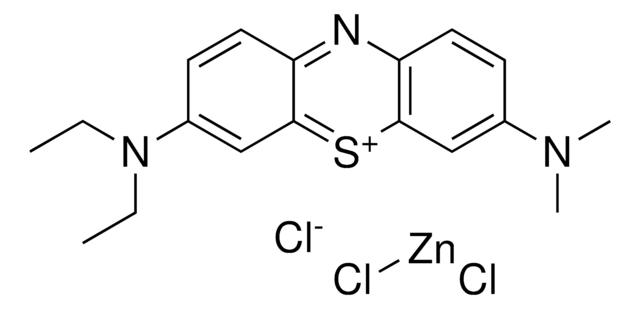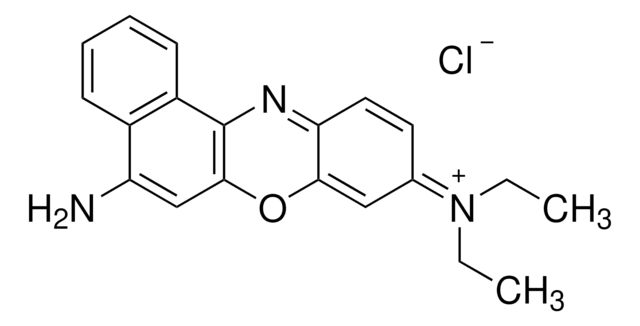There is no testing for either dye purity of dye impurities for product 861340, Thionin Acetate. The dye content is calculated using the spectral characteristics testing procedure from the Biological Stain Commission. The method can be found in the following publication:
Penney, D. P., Powers, J. M., Frank, M., Willis, C., & Churukian, C. (2002). Analysis and testing of biological stains-- The Biological Stain Commission Procedures. Biotechnic & Histochemistry, 77(5–6), 237–275. https://doi.org/10.1080/bih.77.5-6.237.275.
There is no testing for the impurities that are present.
As to the solubility in water, the literature is devoted exclusively to the chloride salt. The Aldrich Handbook of Stains, Dyes and Indicators by Floyd Green states the literature is devoted almost exclusively to the chloride salt. There is mention of 30 mg/ml solubility, but it is somewhat unclear which form of Thionin is being mentioned. There is also a statement that the Thionin Acetate "is much more soluble in water and the short chain alcohols than the chloride."
The exact solubility in water is unknown, but should be greater than 30 mg/ml. A typical concentration for Thionin for Nissl Substance is 0.5%. The Clark method for Nissl substance (1945) uses a concentration of 25 mg/ml or 0.25%. Thionin can be used for a variety of techniques. The dye is also used as a nuclear stain at 0.5% in 20% alcohol. The expectation is that the conditions and concentrations will vary depending upon the test method.













